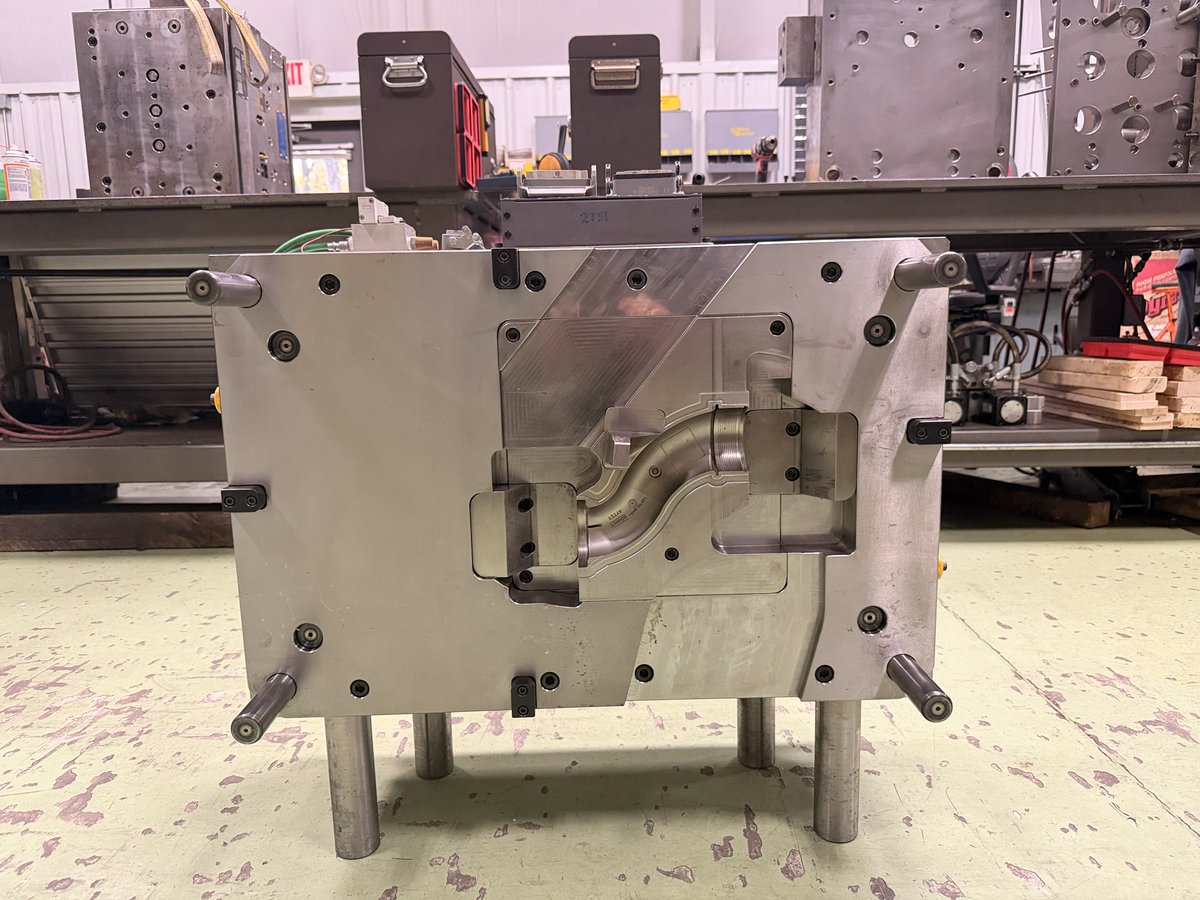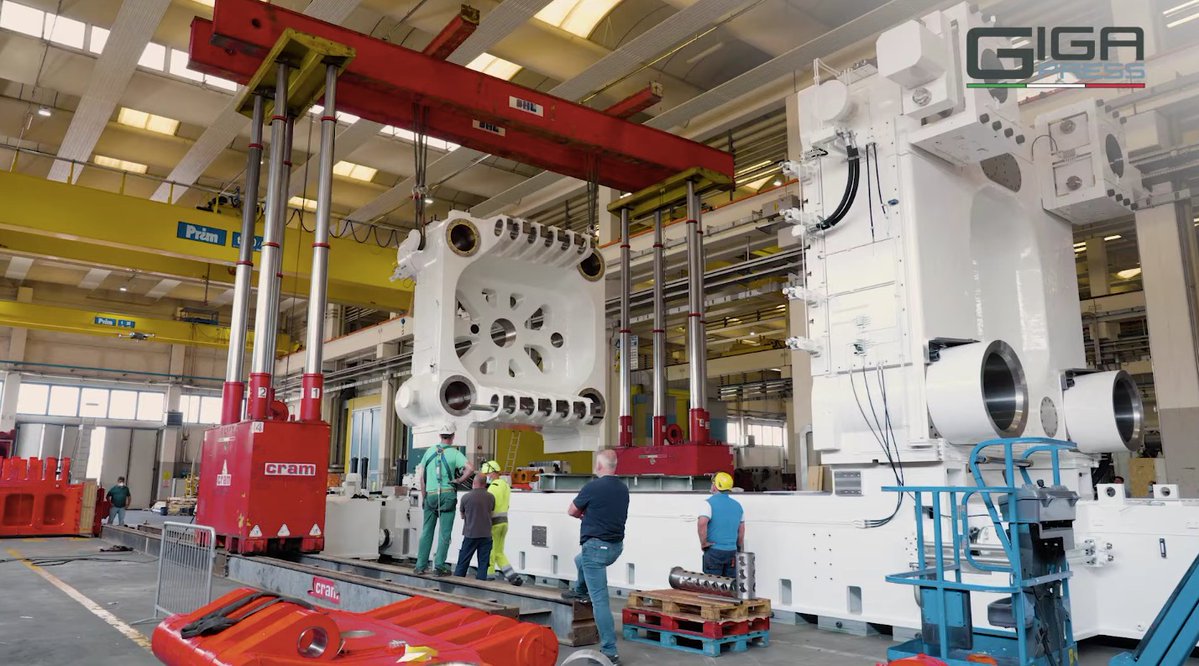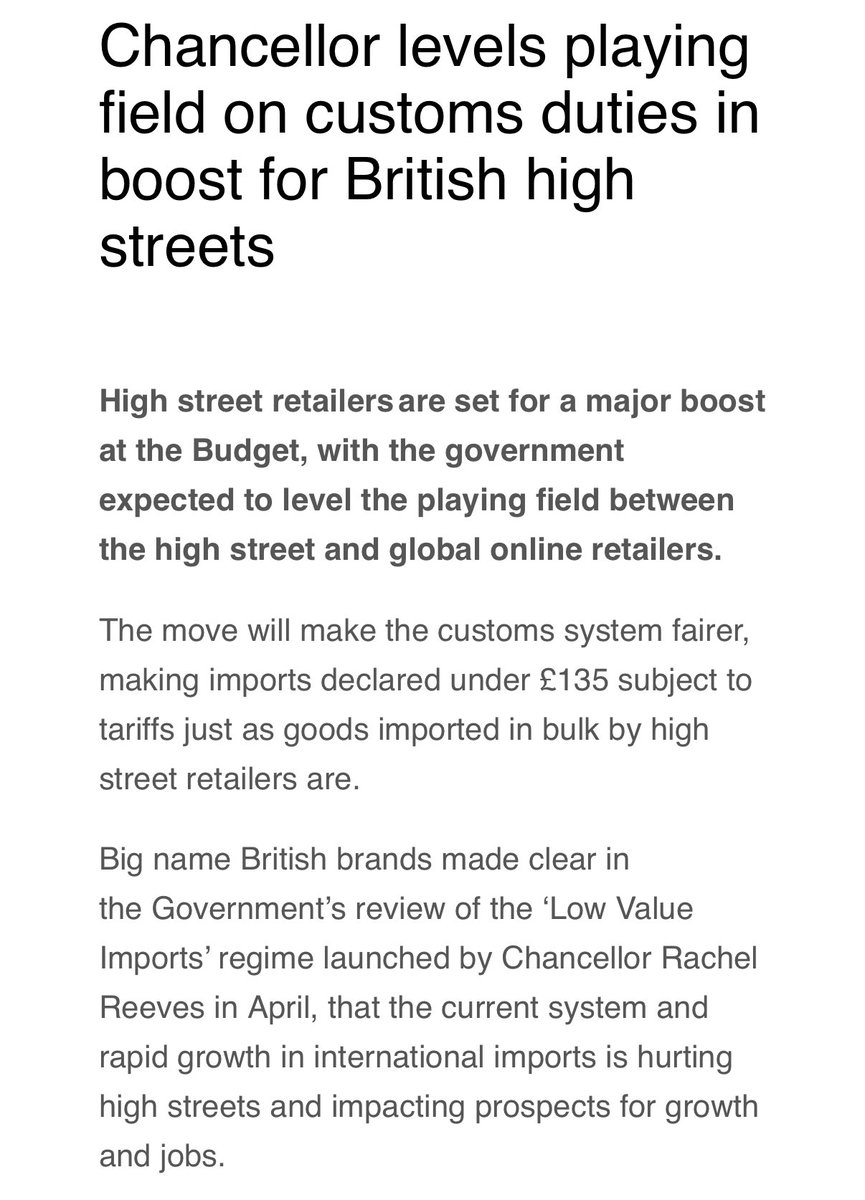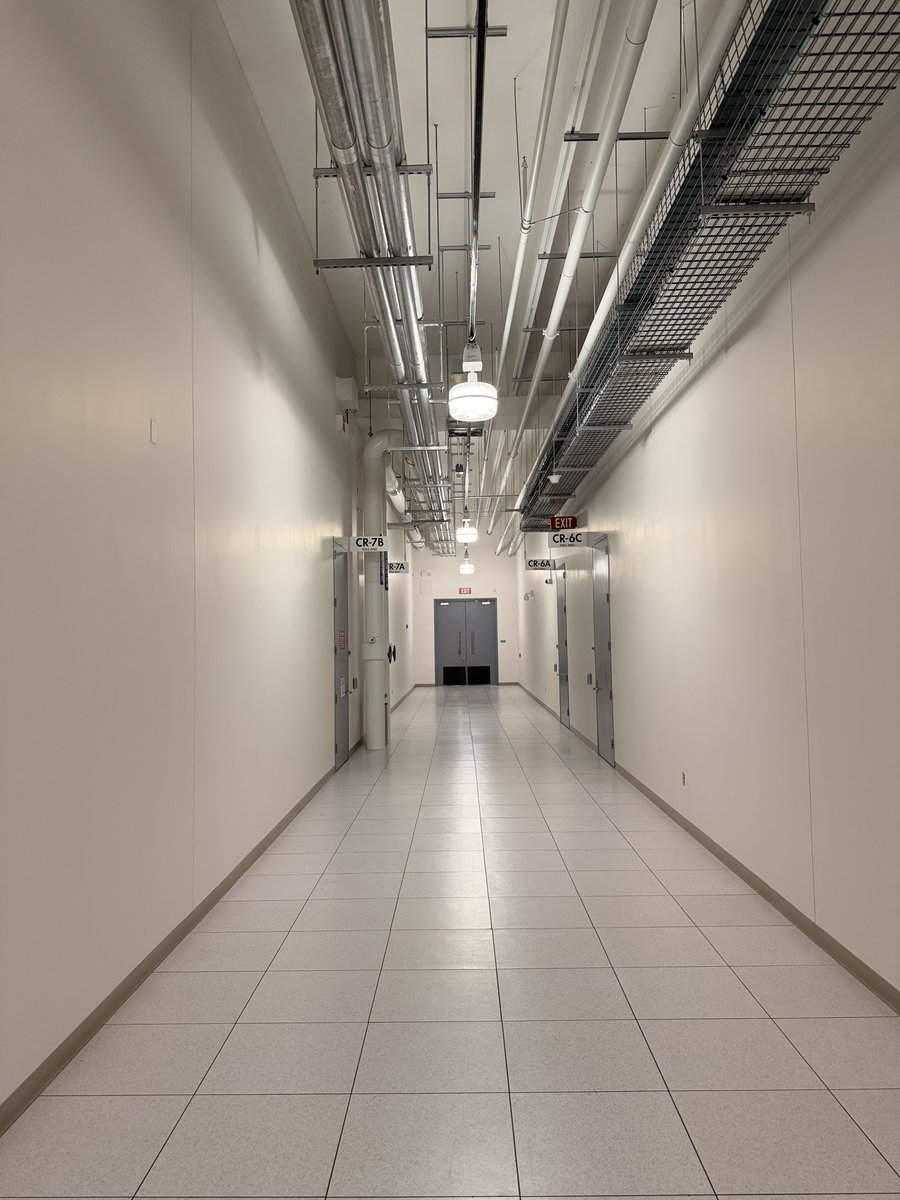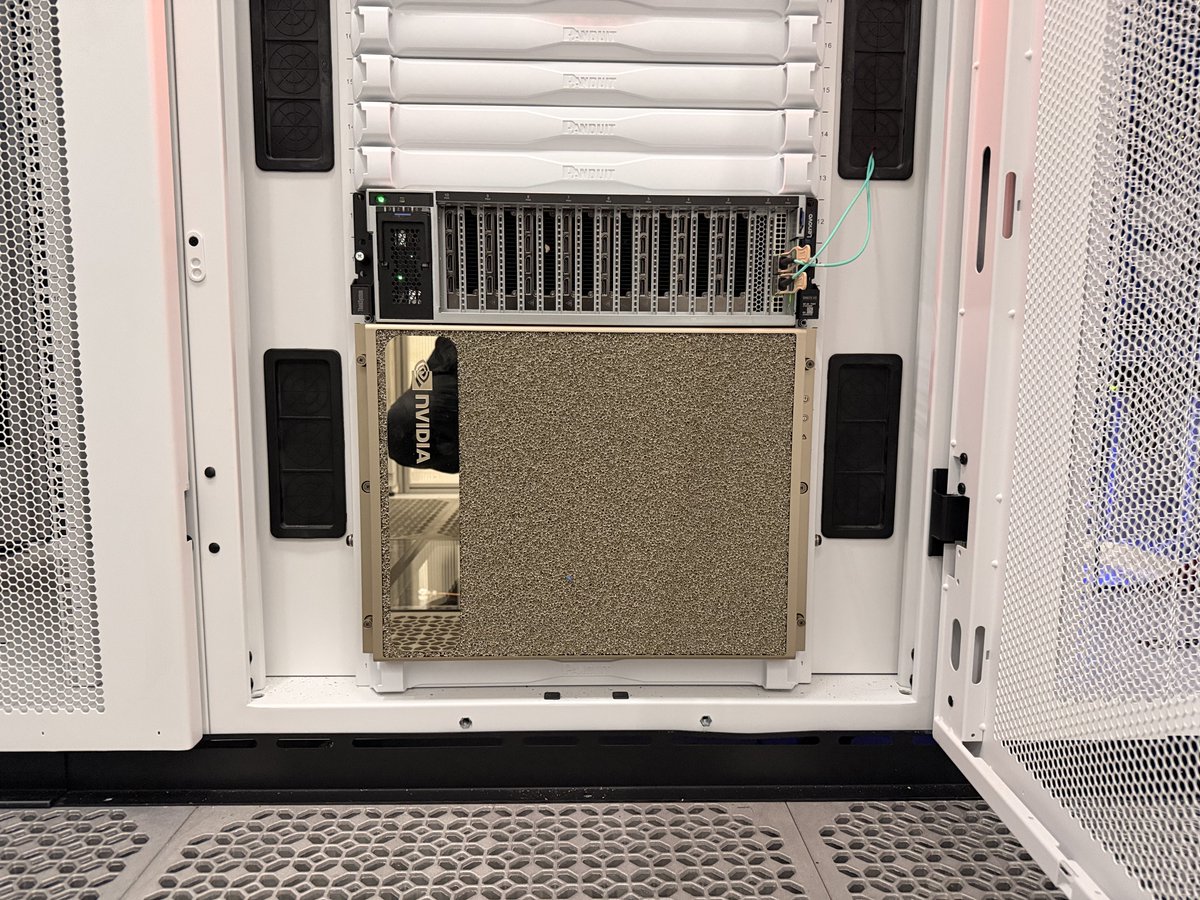🧵SALT🧵
It's been snowing in the UK and the road gritters are out in force, begging the question:
Have you ever wondered where that grit actually COMES from?
The answer is more magical, beautiful and fascinating than you probably realised.
1/14
It's been snowing in the UK and the road gritters are out in force, begging the question:
Have you ever wondered where that grit actually COMES from?
The answer is more magical, beautiful and fascinating than you probably realised.
1/14

Because that dirty-looking salt being spread by trucks on our roads is actually the remains of an ancient ocean (actually two ancient oceans), buried deep beneath our feet.
Most of the stuff being spread in London comes from a single mine in Cheshire - at Winsford.
2/14
Most of the stuff being spread in London comes from a single mine in Cheshire - at Winsford.
2/14

Here, about 20 to 40m beneath the meadows of Cheshire, is an enormous slab of halite, rock salt, the remains of an ancient inland sea a couple of hundred million years ago.
This is where most of our salt comes from.
3/14
This is where most of our salt comes from.
3/14

The stuff we consume is pumped out in the form of brine (solution mining). But the stuff that goes on the road is mined PHYSICALLY - ground and dug away from the saltface. I visited the Winsford mine while researching Material World. It’s a pretty extraordinary place.
4/14
4/14
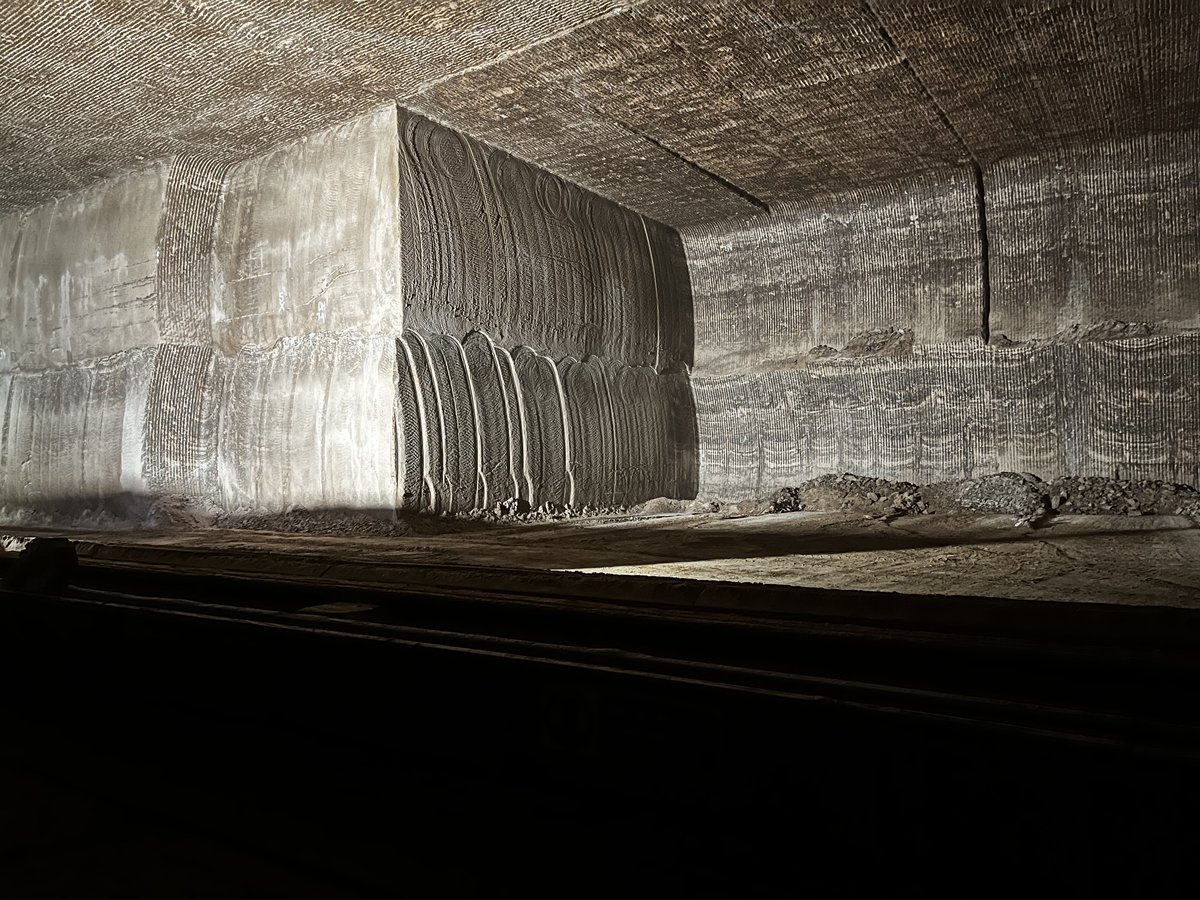
The mine was opened in 1844, making it the UK's longest-running mine.
The tunnels are enormous - not just big enough to drive through but big enough to drive a double-decker bus through. You can taste the salt particles in the air.
The walls are pink & slightly translucent.
5/14
The tunnels are enormous - not just big enough to drive through but big enough to drive a double-decker bus through. You can taste the salt particles in the air.
The walls are pink & slightly translucent.
5/14
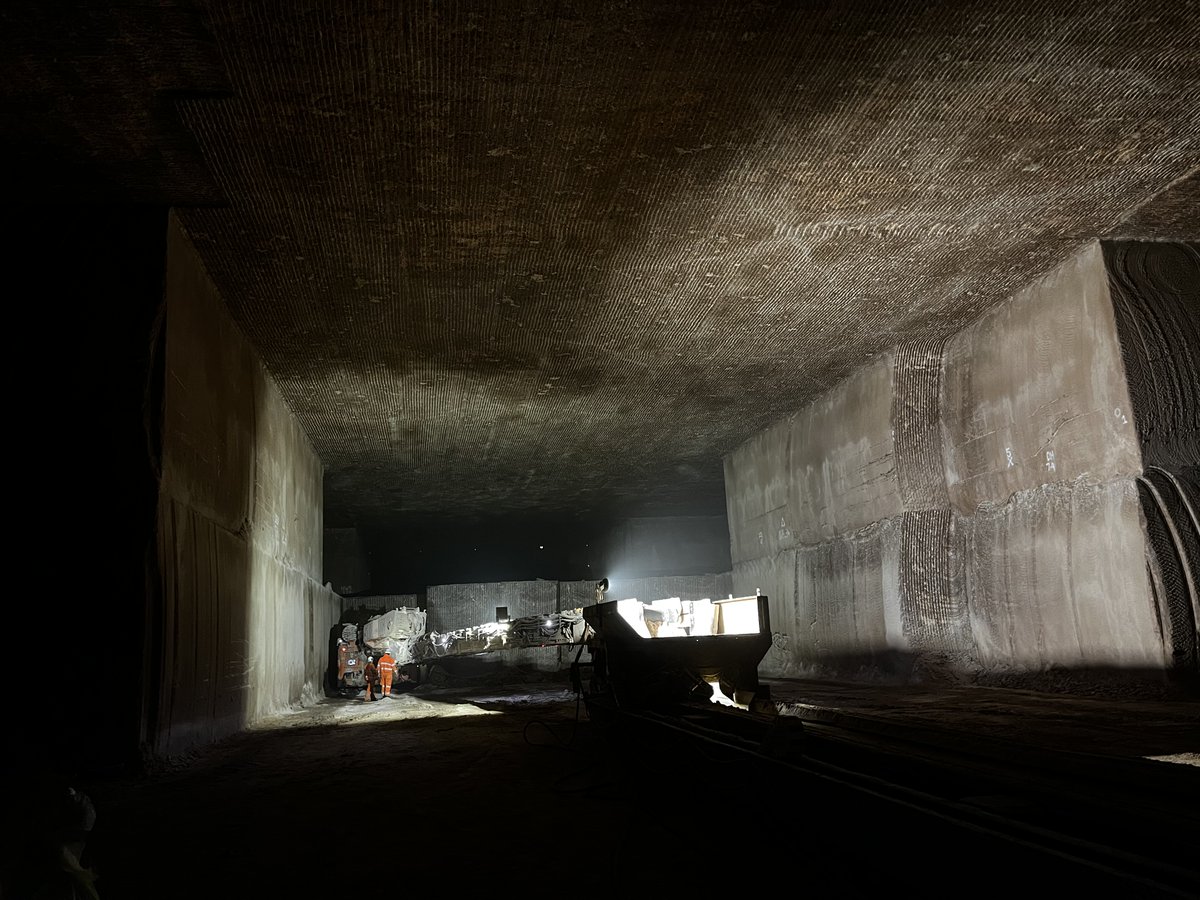
Often when salt pools and dries, as in a salt lake, it forms these little ridges. Well, if you look closely at the ceiling in Winsford you see the imprints of those tiny pools that formed 200 million years ago when the briny waters collected across what is now Cheshire.
6/14


6/14
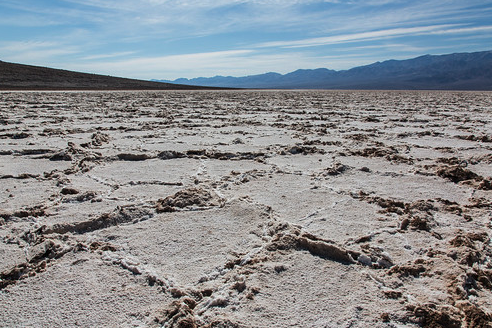
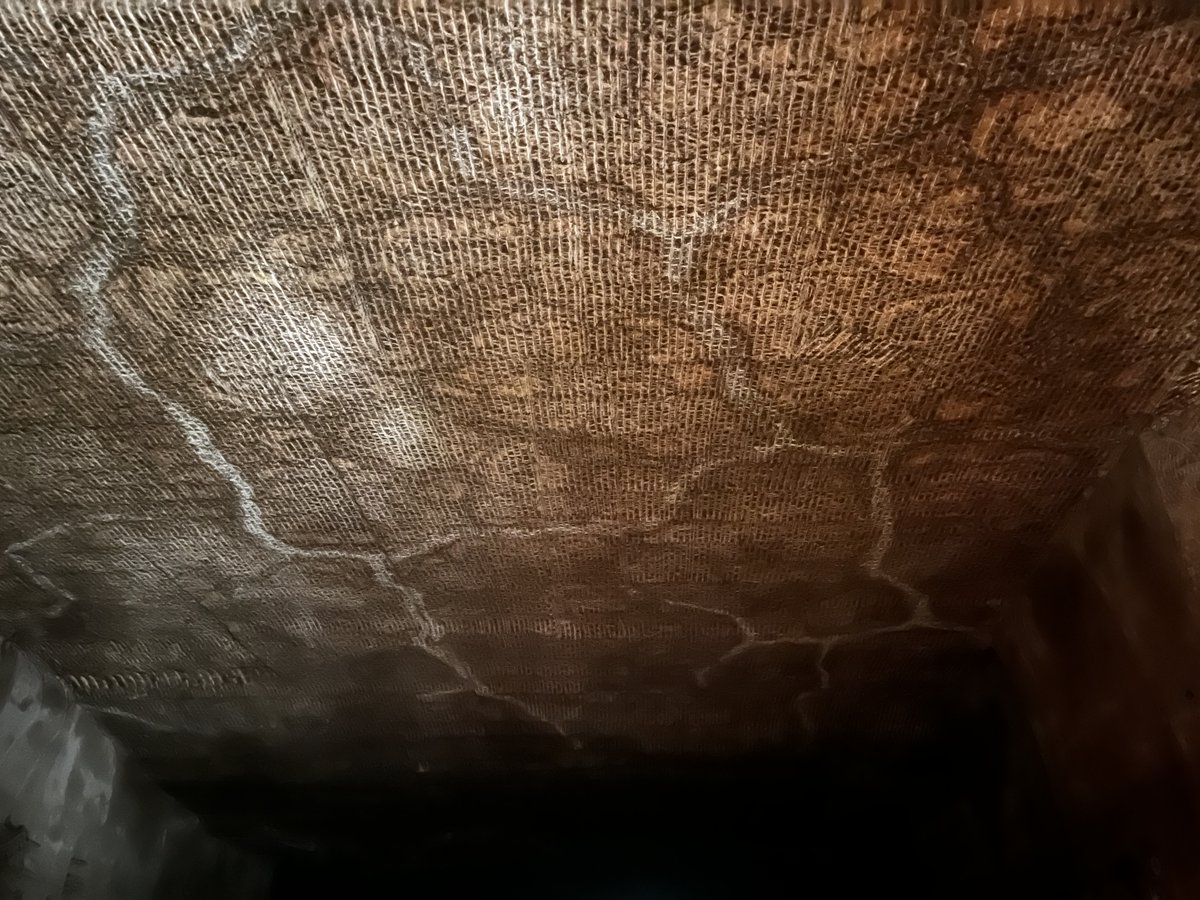
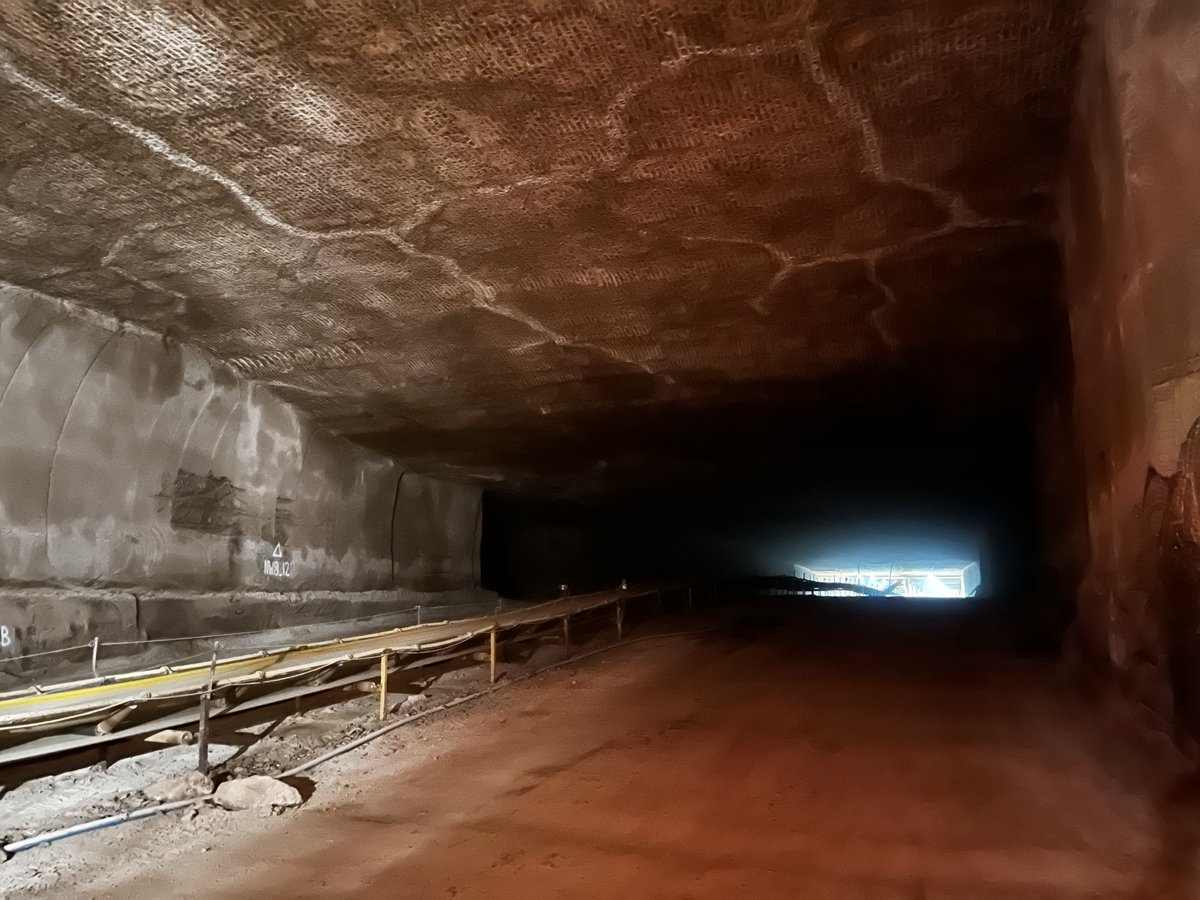
Anyway, the salt is ground and drilled by a suite of enormous mining rigs, controlled via what looked a bit like a playstation controller. Millions of tonnes of salt is sent away from the saltface up conveyor belts - every day of the year.
7/14
7/14

Since the temperature down here is more or less constant and humidity is low (thanks to the salt), some of the old caverns here have been given over for storage. Priceless works of art and archives are stored here beneath the ground, not far from the machinery...
8/14
8/14
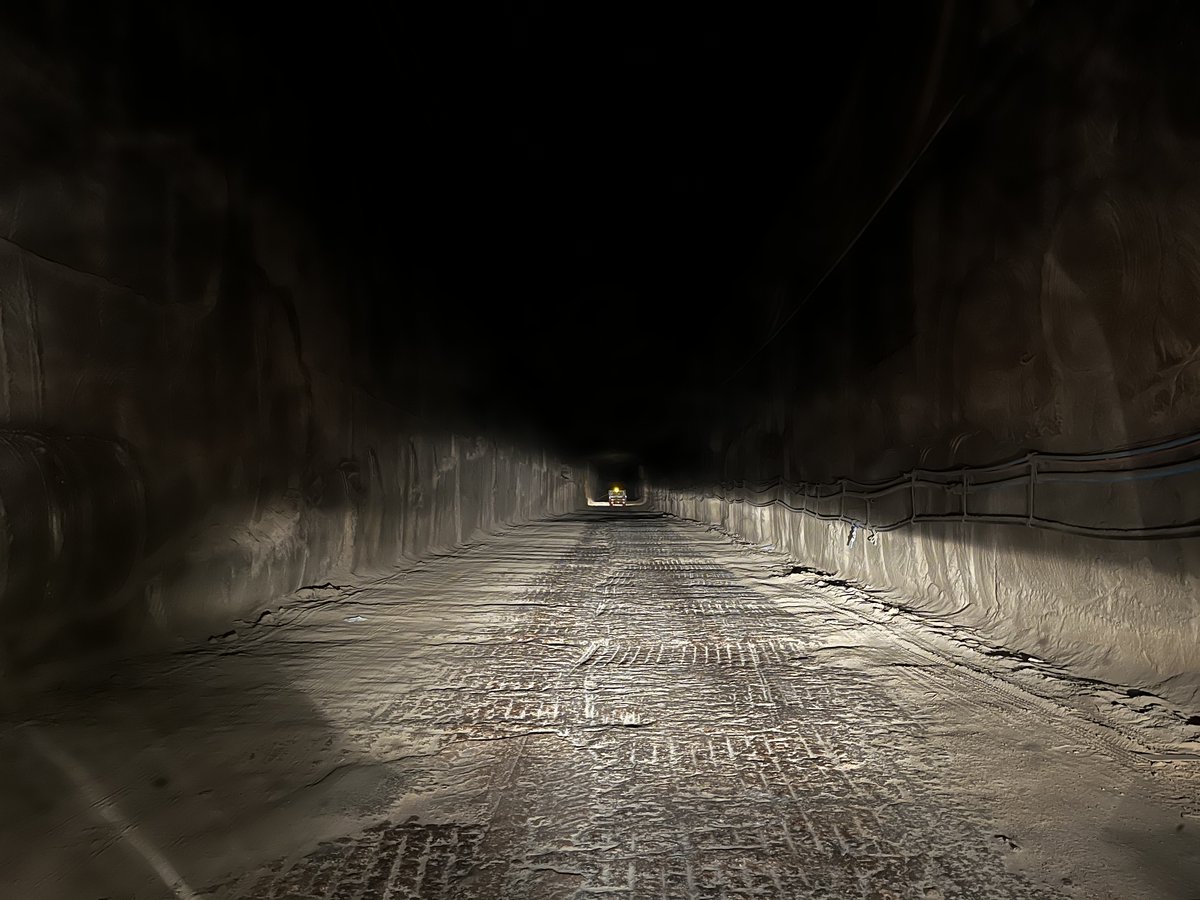
As I said above, the Winsford mine is actually one of two in England producing rock salt. The other is at Boulby in N Yorkshire. This actually started life as a potash mine and these days mines something called polyhalite. I wrote about it here...
9/14
9/14
https://x.com/EdConwaySky/status/1677614290738753537
At Boulby they're burrowing through another ancient, buried sea - the Zechstein sea.
Actually it's even wilder than that. Since most of the tunnels stretch under the coast, they're mining an ancient sea hundreds of metres UNDER the seabed of a live sea (The North Sea).
10/14
Actually it's even wilder than that. Since most of the tunnels stretch under the coast, they're mining an ancient sea hundreds of metres UNDER the seabed of a live sea (The North Sea).
10/14
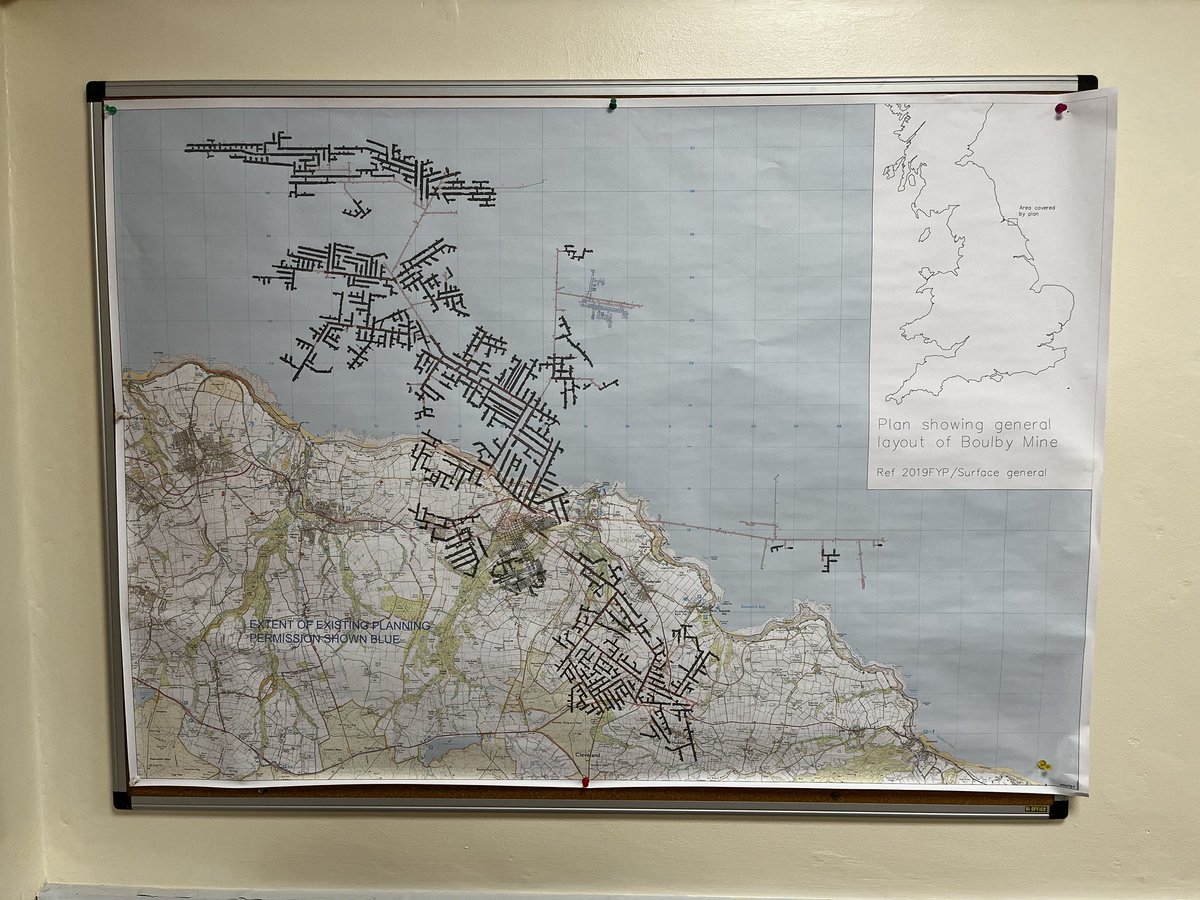
This place is a very different kettle of fish to Winsford. The tunnels are far more claustrophobic. The mine goes down more than a kilometre, with the upshot that it gets VERY hot - over 40 degrees, sometimes over 50.
This is one of the places where road grit comes from.
11/14
This is one of the places where road grit comes from.
11/14

The rock salt from Winsford and Boulby is ground into different sizes. There are 10mm grades and 6mm - the size difference determining how quickly they dissolve.
That in turn determines how long they take to deice the roads. Turns out there's a science and craft to grit!
12/14
That in turn determines how long they take to deice the roads. Turns out there's a science and craft to grit!
12/14
And since govt is terrified we'll run out, salt is one of the few substances the UK keeps a stockpile of.
There's 250m tonnes stored in warehouses around the UK - the National emergency salt reserve.
Don't believe me? This is an actual thing! 👇
13/14gov.uk/government/pub…
There's 250m tonnes stored in warehouses around the UK - the National emergency salt reserve.
Don't believe me? This is an actual thing! 👇
13/14gov.uk/government/pub…
Of course none of the above will have been news to you if you've already read Material World. If you haven't, well... bear in mind Christmas is approaching and the paperback is now available. Just saying...
14/14amazon.co.uk/Material-World…
14/14amazon.co.uk/Material-World…
• • •
Missing some Tweet in this thread? You can try to
force a refresh


